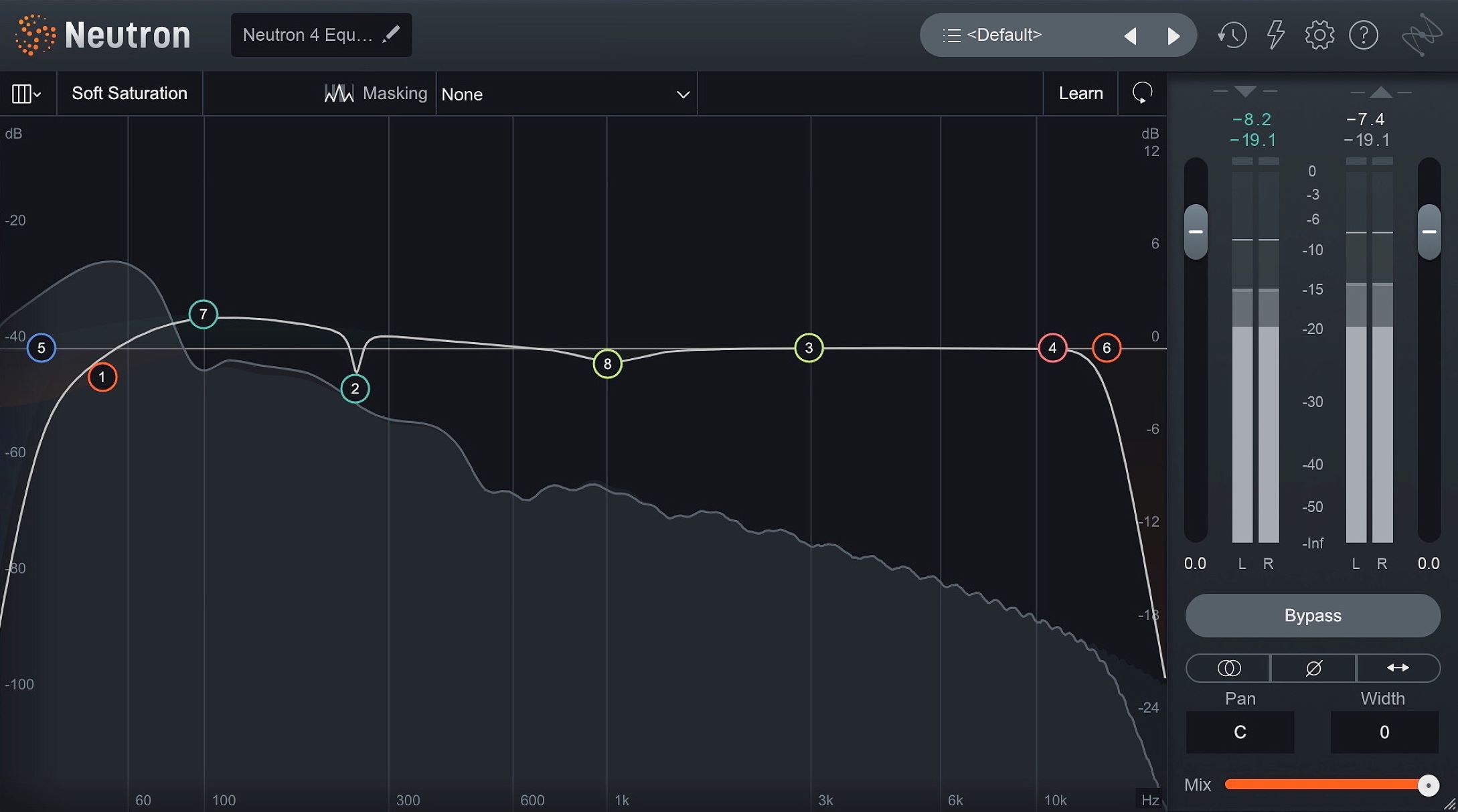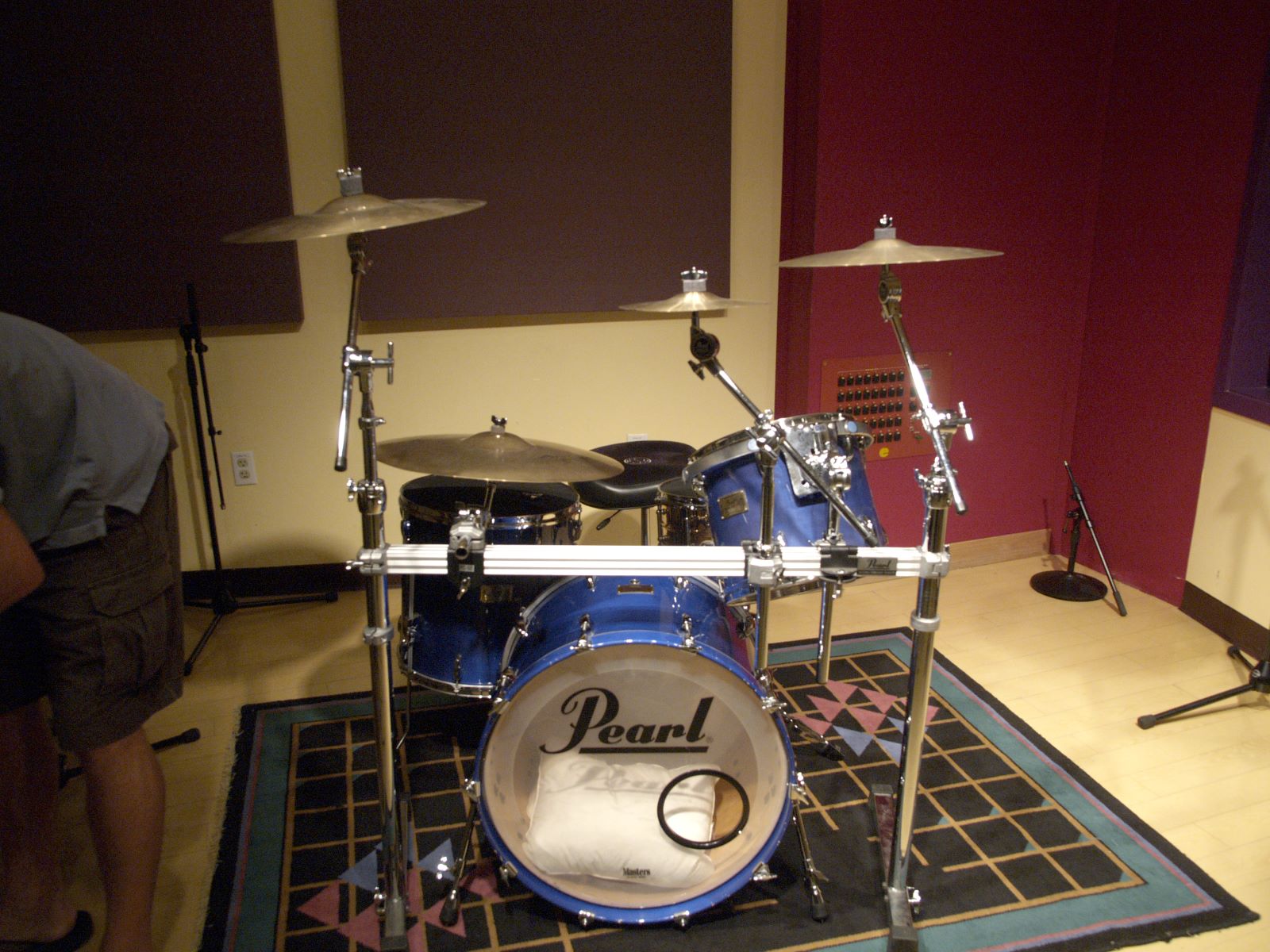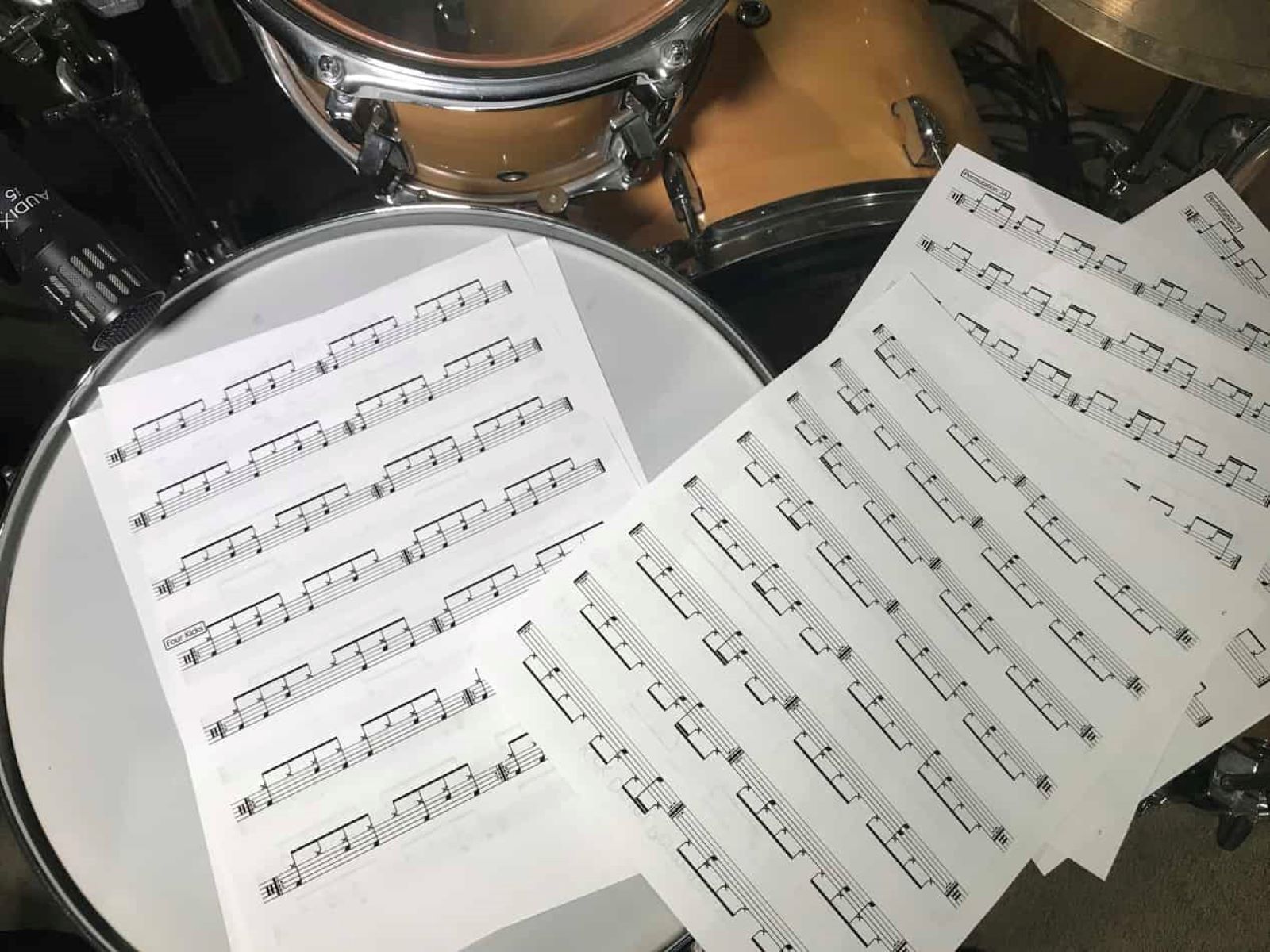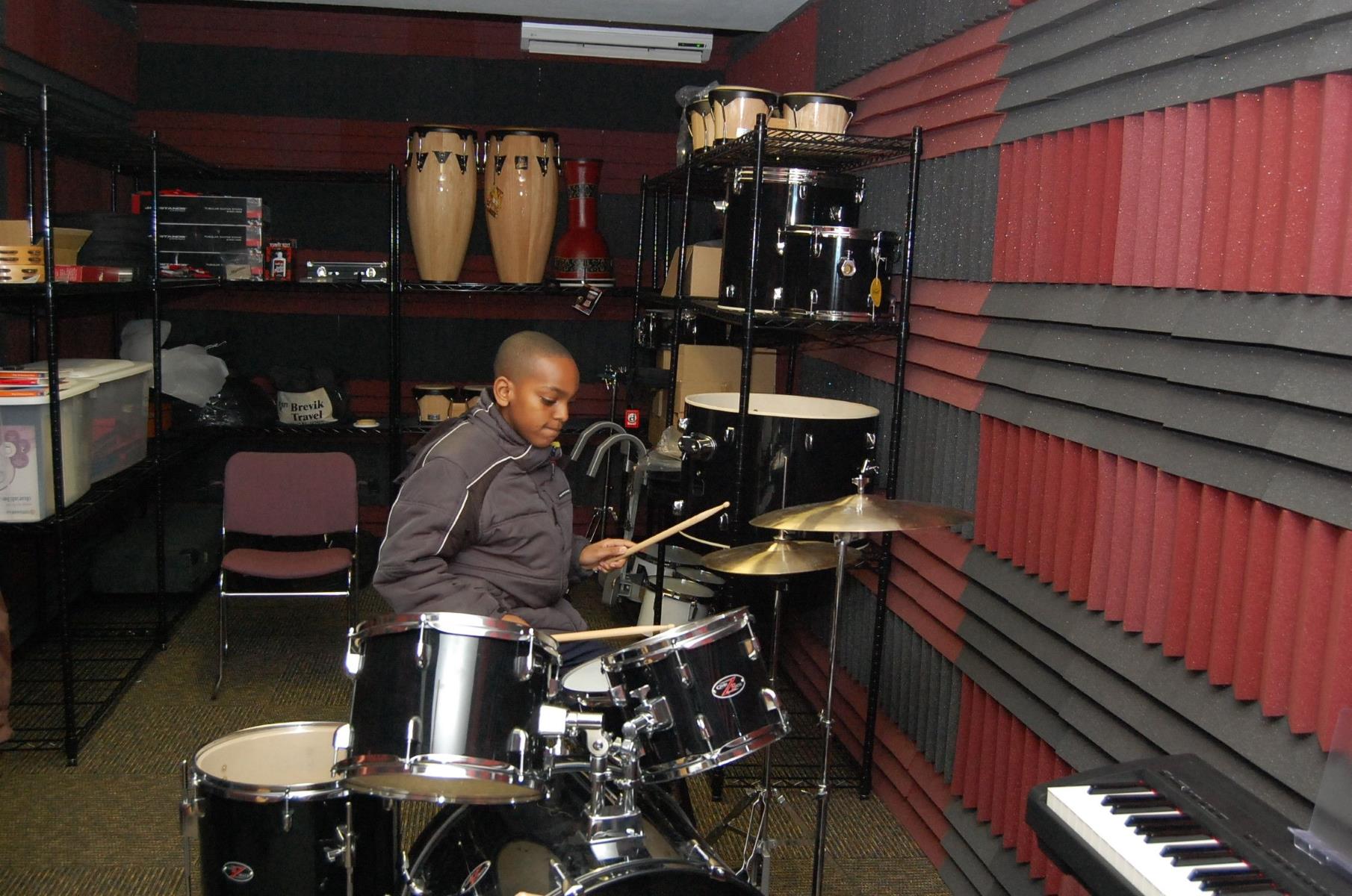Home>Instruments>Drums>How To Notate Brushes On Drums
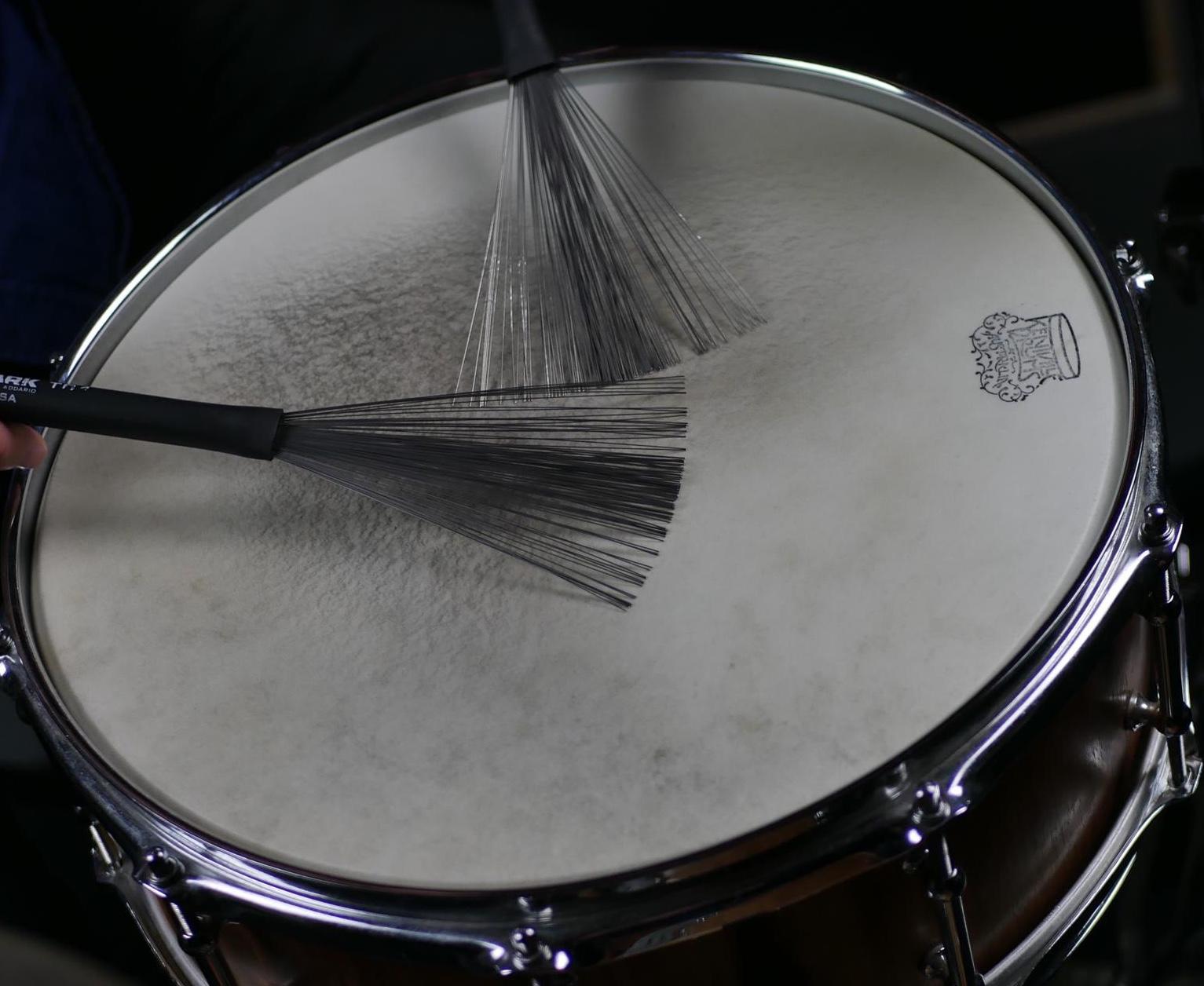

Drums
How To Notate Brushes On Drums
Published: February 8, 2024
Learn how to properly notate brush techniques for drums and improve your drum notation skills with our comprehensive guide. Master the art of drum notation today!
(Many of the links in this article redirect to a specific reviewed product. Your purchase of these products through affiliate links helps to generate commission for AudioLover.com, at no extra cost. Learn more)
Table of Contents
Introduction
Introduction
Drums are a versatile and dynamic instrument, offering a wide range of sounds and techniques for musicians to explore. Among the various drumming techniques, using brushes on drums creates a unique and expressive sound that is commonly found in jazz, folk, and acoustic music genres. Notating brush patterns for drums is essential for accurately capturing the subtleties and nuances of this playing style in musical compositions.
In this article, we will delve into the art of notating brushes on drums, covering both basic and advanced notation techniques. Whether you are a drummer, composer, or arranger, understanding how to notate brush patterns effectively will enable you to communicate your musical ideas clearly and precisely.
From the fundamental concepts of brush notation to the intricacies of advanced techniques, we will provide comprehensive insights to help you master the art of notating brushes on drums. By the end of this article, you will have a deeper understanding of how to accurately transcribe brush patterns, allowing you to bring the expressive and evocative nature of brush drumming to life in your musical endeavors.
Understanding Brush Notation
Understanding Brush Notation
Notation serves as the universal language for musicians to interpret and perform musical compositions accurately. When it comes to brush notation for drums, it is crucial to grasp the fundamental elements that define this unique style of notation.
Brush notation encompasses a diverse range of symbols and markings that convey the specific techniques and articulations employed when playing drums with brushes. Unlike traditional stick notation, brush notation captures the subtleties of brush patterns, including variations in stroke types, dynamics, and rhythmic accents.
Understanding brush notation involves familiarizing oneself with symbols that represent brush-specific techniques, such as sweeping motions, cross-sticking, and brush pressure variations. Additionally, nuances in dynamics, such as soft swells and accents, are integral aspects of brush notation that add depth and expressiveness to the written score.
Drummers and composers must also consider the interaction between brushes and the drum surface, as different brush textures and angles produce distinct timbres and tonal qualities. Notation for brush techniques should reflect these sonic characteristics, providing performers with clear instructions on how to achieve the desired sound.
Furthermore, brush notation extends beyond rhythmic patterns, encompassing visual cues that indicate the specific areas of the drum kit to be played with brushes. This spatial notation guides drummers in seamlessly transitioning between brush techniques and traditional stick playing, enhancing the overall musicality of the performance.
By comprehensively understanding brush notation, musicians can effectively communicate the intricate nuances of brush drumming within their compositions. Whether conveying the delicate whispers of brushes on drumheads or the bold accents created through skillful brushwork, mastering brush notation is essential for capturing the essence of this evocative playing style.
Basic Notation for Brushes
Basic Notation for Brushes
When delving into the realm of brush notation for drums, mastering the basic symbols and techniques forms the foundation for accurately transcribing brush patterns. Basic brush notation encompasses essential elements that capture the core movements and articulations associated with brush drumming.
One of the fundamental symbols in brush notation is the use of “x” or “o” to represent the brush sweep on the drumhead. The “x” symbol signifies a full brush sweep, while the “o” symbol denotes a partial or lighter brush stroke. These symbols are placed on the staff to indicate the specific beats or subdivisions where the brush strokes occur, allowing performers to interpret the rhythmic flow of the pattern.
Dynamic markings play a pivotal role in basic brush notation, conveying the varying levels of intensity and volume within the brush patterns. Symbols such as “p” for piano (soft) and “f” for forte (loud) are utilized to denote the desired dynamics, guiding drummers in executing the appropriate brush pressure and intensity for each passage.
Cross-sticking, a technique where the brush strikes the rim of the drum while the opposite hand mutes the head, is another essential aspect of basic brush notation. This technique is represented by a specific symbol placed above the note or rhythm, indicating the precise moments when cross-sticking is employed to achieve distinct tonal effects.
Furthermore, basic brush notation incorporates visual cues to indicate the specific areas of the drum kit to be played with brushes. For instance, symbols such as “HH” (hi-hat), “S” (snare), and “BD” (bass drum) provide spatial guidance, ensuring that drummers seamlessly transition between brushes and traditional stick playing while maintaining spatial awareness and precision.
By mastering the basic notation for brushes, composers and arrangers can effectively communicate the foundational elements of brush drumming within their musical scores. These fundamental symbols and techniques serve as the building blocks for capturing the expressive and nuanced qualities of brushes on drums, laying the groundwork for more intricate and advanced brush notation concepts.
Advanced Notation for Brushes
Advanced Notation for Brushes
As musicians delve deeper into the art of brush notation for drums, they encounter advanced techniques and symbols that capture the intricacies and nuances of brush drumming with greater precision. Advanced brush notation expands upon the foundational elements, offering a comprehensive vocabulary to articulate the expressive qualities of brush patterns in musical compositions.
One advanced technique commonly utilized in brush notation is the incorporation of specific symbols to denote variations in brush pressure and texture. For example, symbols such as “→” and “↘” represent gradual and accented brush swells, respectively, allowing composers to convey the subtle shifts in dynamics and tonal coloration within the brush patterns.
Ghost notes, which are subtle and muted brush strokes that contribute to the rhythmic intricacy of a pattern, are integral components of advanced brush notation. These nuanced strokes are denoted by smaller noteheads placed within the rhythmic framework, indicating the presence of ghosted brush articulations that add depth and complexity to the overall groove.
Extended techniques, such as brush scrapes and drags, are represented through specialized symbols and notations in advanced brush notation. These unconventional brush articulations introduce textural and timbral elements to the drumming palette, enriching the sonic tapestry of the composition and providing performers with detailed instructions on executing these distinct techniques.
Additionally, advanced brush notation encompasses the use of articulation markings to convey specific brush techniques, such as accented sweeps, staccato brush patterns, and legato brush rolls. These markings, including accents, staccato dots, and slurs, empower drummers to interpret the nuanced articulations and phrasing inherent in brush drumming, elevating the expressiveness and authenticity of their performances.
Furthermore, advanced brush notation may incorporate rhythmic complexities, syncopated patterns, and polyrhythmic elements that challenge performers to navigate intricate brush passages with precision and finesse. Notation techniques such as tied rhythms, polyrhythmic overlays, and rhythmic groupings provide a roadmap for drummers to navigate the rhythmic intricacies inherent in advanced brush patterns.
By embracing the nuances of advanced brush notation, composers and arrangers can effectively capture the expressive depth and intricacy of brush drumming, enabling performers to breathe life into the written score with authenticity and artistry.
Conclusion
Conclusion
Mastering the art of notating brushes on drums is an enriching journey that empowers musicians to communicate the expressive nuances of brush drumming within their compositions. From understanding the fundamental elements of brush notation to embracing advanced techniques and symbols, the process of notating brushes on drums enhances the depth and authenticity of musical scores, providing performers with clear and detailed instructions for bringing the evocative qualities of brush drumming to life.
By comprehensively understanding brush notation, musicians can effectively capture the subtleties of brush techniques, including sweeping motions, cross-sticking, dynamic variations, and spatial notations, within their musical scores. Basic brush notation serves as the foundational framework for transcribing brush patterns, encompassing essential symbols and techniques that lay the groundwork for more intricate and expressive notations.
Furthermore, delving into advanced brush notation unlocks a rich vocabulary of symbols and techniques that articulate the intricacies of brush drumming with precision and depth. From conveying nuanced brush pressures and ghosted articulations to incorporating extended techniques and rhythmic complexities, advanced brush notation empowers composers to capture the expressive depth and complexity of brush patterns within their compositions.
Ultimately, the mastery of brush notation enables drummers, composers, and arrangers to preserve the artistry and authenticity of brush drumming, ensuring that the evocative qualities and nuances of this expressive playing style are faithfully conveyed in musical scores. Whether crafting intimate jazz ballads, folk-inspired compositions, or evocative soundscapes, the ability to notate brushes on drums enriches the musical landscape, inviting performers to interpret and embody the expressive essence of brush drumming with clarity and artistry.
As musicians continue to explore the diverse sonic possibilities of drums and percussion, the art of brush notation stands as a testament to the enduring creativity and innovation within the realm of musical expression. By embracing the art of notating brushes on drums, musicians honor the rich tradition of brush drumming while charting new frontiers of artistic exploration and sonic storytelling.

